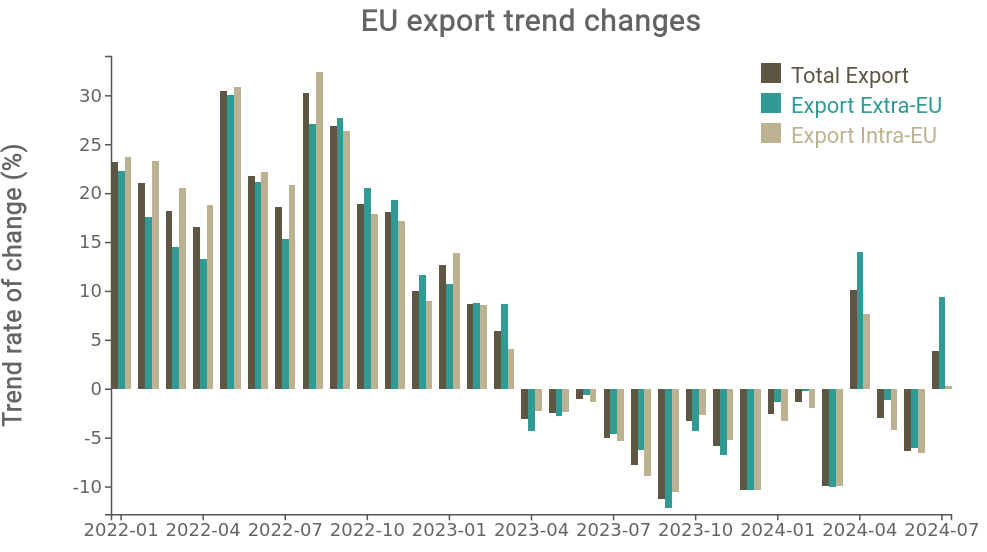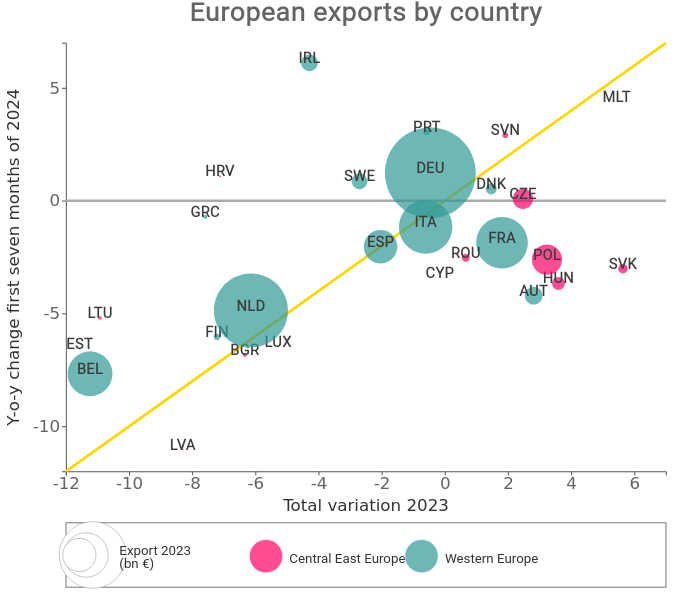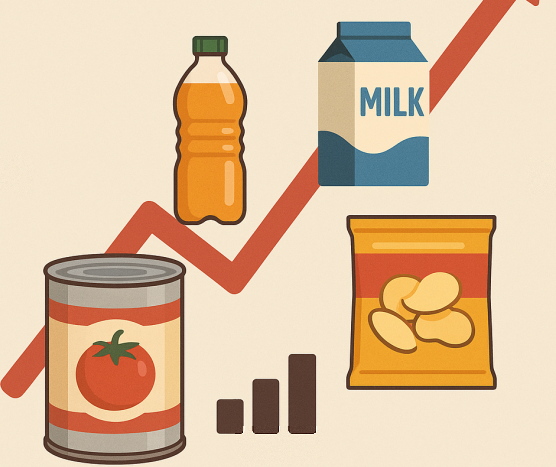European Export Trends: Declines and Recoveries
Despite positive signs, the recovery trajectory of European exports remains uncertain
Published by Simone Zambelli. .
Uncertainty Europe Conjuncture Global economic trends
In the past two years, the trend of the Union's exports has experienced a fluctuating path, marked by significant changes in both intra-EU and extra-EU dynamics. The European industry appears to be penalized by both cyclical factors, related to an uncertain economic cycle, and more structural factors, related to the slowdown of the German economy and, more generally, to the productivity challenges widely discussed in the recent Draghi Report.
Focusing our attention specifically on the results achieved by European exporters in international markets, it is clear that the recovery from the 2023 slowdown is not yet clearly outlined.

Source: ExportPlanning
The proposed chart represents the year-on-year growth rate of EU exports from January 2022 to July 2024 (the latest historical data released by the European statistical office). The chart clearly allows us to identify the dynamics that have characterized the EU block's exports in recent years: after the strong momentum of 2022, also driven by rising prices, it is evident that from the second half of 2023, there was a reversal, in line with the deterioration of the international economic climate and a progressive slowdown in global demand.
European exports thus entered negative territory, experiencing wider penalties, especially in extra-EU areas. However, the beginning of 2024 brought weak positive signals, although they are still uneven and fragile. Not all months of the new year ended with EU exports in positive territory, but the evidence undoubtedly suggests a gradual, albeit incomplete, recovery from the setbacks of 2023.
However, there are divergences in the performance of the various Union countries, as shown in the following chart, which illustrates the change in exports by country both annually (2023) and year-to-date (first seven months of 2024 compared to the corresponding period last year). Countries above the bisector are those that, in the first months of 2024, performed better than the 2023 average.

Source: ExportPlanning
Overall, the major exporters appear largely "flattened" along the bisector, indicating that the dynamics of the last seven months are essentially comparable to the 2023 results. This is the case for Germany (DEU), Italy (ITA), Spain (ESP), and also the Netherlands (NLD).
Particularly notable is the further slowdown of France (FRA) and, more generally, of Eastern European economies, which had shown positive trends in 2023.
In particular, Belgium is among the countries with the worst performances.
This is especially evident in the following chart, which shows the export trends of several key countries (Italy, Germany, France, Spain, the Netherlands, Belgium, Poland) compared to December 2022, providing a comparison between different European economies.
EU Export Dynamics for Key Exporting Countries
(Quarterly Cumulative)

Source: ExportPlanning
Since the end of 2022, there has been a clear general decline in exports for all countries, with more marked declines for the Netherlands and Belgium, highlighting the reduction in raw material prices and the complexities of supply chain linkages with nearby Germany.
Conversely, Italy remains one of the exporters that has shown greater resilience. Despite an initial decline, it is interesting to note how Italy has essentially held steady in recent months. Finally, Poland stands out for a less volatile trajectory, with a less pronounced decline but also a more modest recovery compared to other countries, especially in recent months, where it has shown some difficulties.
Conclusions
The analysis of EU export data over the past two years reveals a complex picture, characterized by significant divergences between the economies of various Member States. Although 2024 has brought some signs of recovery, it is still projected to be a year of weakness for European industry. The coming months will thus be crucial in determining whether Europe will be able to return to a path of sustainable and balanced growth.


